The appearance of the baby in the family is a huge joy and happiness. The baby needs love and affection, and he also needs proper care and care. He expects all this from his mother, but any mother wants to give all this to her little lump of happiness. You have to consider a lot of things. Including you need to know how to care for the umbilical wound and what to do if a navel in a newborn gets wet.
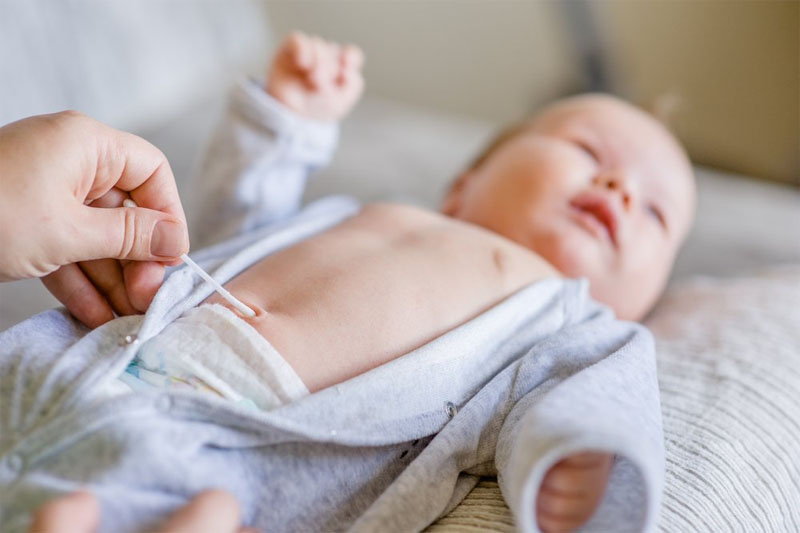
Umbilical wound healing is normal
The navel of the baby will remain for the mother an eternal reminder of a strong connection with him. In order for the healing process itself to take place without complications and risks of introducing the infection, it is worth knowing exactly how it goes.
After the baby is born, the umbilical cord is cut, processed and pinched with a special bracket. Previously, they simply tied it up. On the second day, the umbilical cord dries up, and by the third day it begins to exfoliate. On the 3-7th day, the umbilical cord disappears, but the wound care does not end there - this place is still open for infections and pathogenic bacteria. Finally, the wound heals on 14-28 days. But it happens that on about 19-24 days the wound bleeds a little. This is normal if it is not permanent. However, if there is any doubt, it is better to tell the pediatrician about this.
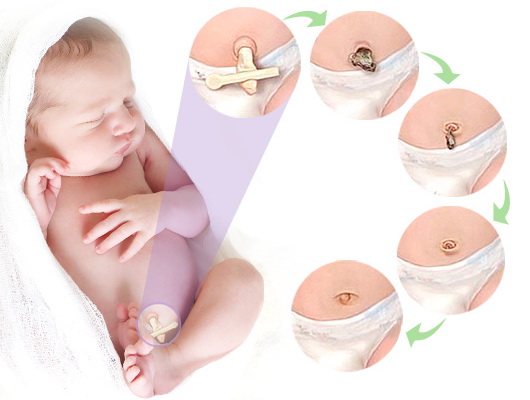
The indicated dates are rather arbitrary, for each baby the healing period will be different. But compliance with simple hygiene rules is one of its determining factors. Usually they are told by a patronage sister who arrives on the first day after discharge. But unfortunately, it is not always possible to get qualified advice. Therefore, mom should attend to the search for information independently and in advance.
The healing time of the umbilical wound depends on various factors. A very important role is played by compliance with hygiene requirements and regular regular procedures.
What to do if the navel of a newborn gets wet?
Remember: for any signs that the healing is going wrong, and you notice that the baby is constantly secreted fluid from the wound, you need to see a doctor. He will be able to understand the cause and prescribe the appropriate treatment.Parents who did not contact the pediatrician in time should understand that poorly healing wounds can threaten suppuration, infection, sepsis.
Normally, from the wound, a bit of the uterus is needed to heal the tissues. It dries, forming crusts - they need to be cleaned regularly. Otherwise, they accumulate and become a favorable environment for the development of various infections. Only the part that soaks from antiseptic solutions and is easily removed with a cotton swab is removed. The baby’s wet navel can be identified by the following symptoms:
- Sucrowitsa does not dry out for a long time. After treatment with an antiseptic for several hours, the wound remains moist, the crust is poorly formed;
- Unpleasant (putrid) smell from the wound;
- Purulent, bloody discharge, the appearance of a succession (discharge becomes abundant, acquire a yellowish color, there may be a pink tint);
- The skin around the navel reddens and becomes inflamed, becomes hot;
- The general condition of the child has changed - he is anxious, does not suckle well, has increased body temperature, etc .;
- other suspicious changes in the condition of the child, causing concern and questions for the mother.
The listed symptoms indicate that the immune system of the child’s body is rather weak or a foreign body has got into the wound.
Also, such signs may appear due to too deep or large wounds (there was a thick umbilical cord).
In addition, it may be manifestations of omphalitis. This is an infectious inflammation of the umbilical wound, umbilical ring, subcutaneous tissue. This complication may be accompanied by an increase in temperature in the baby, a decrease in appetite, a lack of weight gain and a sluggish state of the baby. In rare cases, it happens that the connective and vascular tissue grow inside the navel, forming granulomas. Such a pathology requires treatment with cauterization of lapis.
The doctor will be able to determine the true cause. Usually prescribed quartzization, antibacterial ointment. The baby is not advised to spread on the tummy before three weeks, so as not to damage the wound that has not yet completely healed.
Someone after a week forgets about the wound, because healing went quickly, but for someone a month later the care for the navel does not stop. Everything is very individual. The main thing in caring for the baby is to adhere to common sense. Do not self-medicate and follow the dubious advice of a “knowing” neighbor (in the spirit of “put a coin so that the navel is beautiful”).
It is also dangerous to seal the navel with adhesive. The humid and warm environment under it is very cozy for bacteria, which begin to multiply rapidly there. Many doctors claim that care can be stopped if the wound remains dry for two days, but only if the baby is more than two weeks old.
So why the navel gets wet
- improper care (rare or incorrect navel handling, irregular diaper replacement);
- weakened immunity in the baby;
- individual structural features (too large umbilical wound);
- bleeding disorder;
- too frequent treatment of the umbilical wound (more than 2 times a day), the use of a large amount of antiseptic, because of which drying does not occur.
Effects
Without treatment, the situation can quickly get worse. Inflammation will pass to adjacent tissues. The development of omphalitis will begin. The navel will swell, turn red, profuse purulent discharge will begin. The baby's body temperature will rise, he will eat poorly, become lethargic, capricious. In severe cases, sepsis (infection of the blood), peritonitis (inflammation of the peritoneal wall) may develop.
More serious reasons why the navel can get wet are omphalitis, fistula, fungus, dermatitis.
Omphalitis
This is an inflammatory process that affects the umbilical ring, the bottom of the wound, fatty tissue, and blood vessels. The causative agent of infection is bacteria (more often - staphylococcus, less often - E. coli, streptococcus, pneumococcus)
The main cause of omphalitis is the lack of treatment for the navel wound in the first weeks of a child's life.
Characteristic symptoms:
- redness, bluish tint, swelling of the skin around the navel;
- grayish discharge from the wound;
- excessive tearfulness of the baby, refusal to eat;
- fever.
If omphalitis is suspected, it is necessary to consult a pediatrician as soon as possible and begin treatment. Without treatment, the infection will spread throughout the body, disrupting the performance of internal organs.
Umbilical fistula
It may appear with the formation of a fistula in the abdominal cavity caused by a defect in the structure of the muscles of the child. It connects the navel to other organs, the contents of which, when ingested, cause an unpleasant odor. It may be the bladder or intestines. A bad-smelling navel with a fistula is accompanied by:
- High body temperature;
- An increase in the navel in size;
- Abundant discharge during tension of the abdomen during heavy crying, bowel movements.
There are incomplete fistulas, they are caused by insufficient closure of the channels connecting the umbilical cord with internal organs. Perhaps their independent overgrowing by the age of 6 months baby. If the fistula is complete, it requires surgery. Otherwise, inflammation may appear.
Fungus (granuloma)
This is the proliferation of granulation cells at the bottom of the umbilical fossa. Sometimes fungus can become infected due to the penetration of bacteria into the tissue.
Fungus is not an infection, it is an individual feature of the body. More often, growth is observed in newborns with a wide umbilical ring or a wide umbilical cord. Fungus is not the norm, so it must be treated.
Characteristic symptoms:
- a tumor-like formation, first filling the umbilical ring, then going beyond it;
- pale pink color formation.
The granuloma is not dangerous, with small sizes and proper care passes independently. But, since there is a risk of infection (the development of omphalitis), the child must be shown to the doctor to diagnose and establish treatment tactics.
Dermatitis
This is the redness of the skin around the navel. Its appearance may be due to the baby's special sensitivity to hygiene items. It can be wet wipes, a means to eliminate scabies and diaper rash. Another factor may be the heat in the room, the child is sweating, the skin becomes excessively wet - this is why the navel in the newborn gets wet.
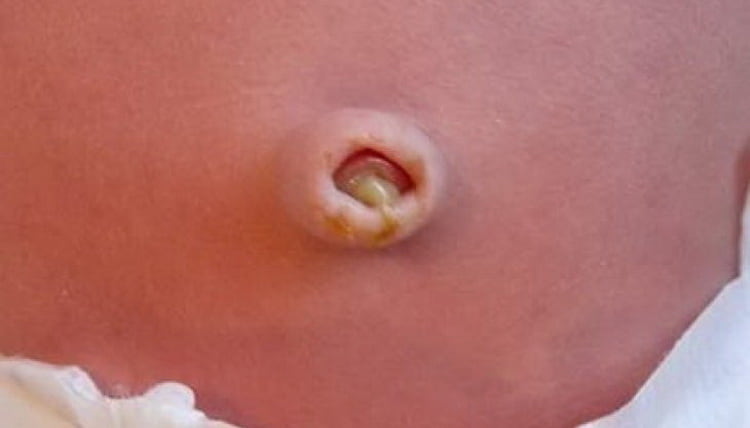
Methods of treatment (how to handle)
[sc name = ”rsa”]
With a weeping navel, the doctor prescribes additional funds, based on the condition of the baby. In most cases, drying antibacterial drugs are sufficient.
Zelenka
The product has drying properties, prevents the development of infection. It is good to treat Zelenka with prophylaxis, but when suppuration occurs, it is better to replace it with 5% manganese solution, or use 70% alcohol. They leave no traces and allow you to control the appearance of redness, dermatitis.
Chlorophyllipt
Plant-based antimicrobial. 1% alcohol solution kills pathogenic bacteria and prevents their reproduction, relieves inflammation. It is applied to the wound after peeling with hydrogen peroxide. Preliminarily, the navel must be dried with a clean cotton swab. Otherwise, the solution of chlorophyllipt reacts with hydrogen peroxide, a precipitate forms, the bactericidal properties are reduced.
Furacilin alcohol solution
Suppresses the development of microbes, promotes healing, has drying properties. Processing with an aqueous solution is possible, but it must be combined with other antiseptics.
Baneocin
Baneocin in the form of an ointment or powder, the second option is more often used because of its high drying properties. The drug has an antibacterial effect, eliminates inflammation. It is also used after cleansing the wound with hydrogen peroxide.
Xeroform Powder (possesses antiseptic, drying properties).
You can not prescribe drugs on your own, because the degree of the inflammatory process can only be assessed by a doctor. With a strong spread of infection, children undergo complex treatment, consisting of external processing of the navel and oral antibiotics. Babies are given injections or droppers. In severe cases, blood transfusion, ultraviolet radiation, surgical intervention are used.
Wet Navel Care Tips
- treat 2 times a day with the agent prescribed by the pediatrician;
- before processing, be sure to wash your hands with soap;
- do not push
- Do not touch the wound with dirty hands, you can not try to remove pus or climb into the navel with cotton swabs that can injure healing tissue;
- in no case do not stick tape, do not apply a bandage;
- 2-3 times a day to arrange air baths for the baby;
- regularly change baby clothes, wear only spacious items made from natural fabrics;
- wash clothes using special baby powder;
- Iron diapers and clothes on both sides;
- regularly change the diaper;
- for healing, use diapers with a special cutout for the navel or make such a cut yourself;
- Do not try to clean all crusts and purulent discharge at a time;
- crusts are removed only soaked. When cleaning the wound, only soaked crusts should be carefully cleaned with a cotton swab. If they cannot be removed, they cannot be stripped off: tissue has not yet formed under them, removal can lead to bleeding wounds;
- Do not spread the child on the tummy until complete healing. Otherwise, the risk of infection, injury to the wound increases, the baby may feel discomfort.
If the wound does not heal in a month, you should definitely consult a doctor. At an early stage of a weeping navel, a child can be helped by special means and avoid complications. In some cases, it is enough to adjust the care for the umbilical wound.
Is it possible to bathe a baby
Bathing a newborn with a weeping navel is allowed, but, following certain rules. It is very important for bathing to use boiled water, the optimum temperature is 34-37 degrees. Do not add decoctions of herbs, gel, bath foam to the water. You can add only a weak solution of potassium permanganate (potassium permanganate). It is recommended to bathe a baby in such water once a week, since potassium permanganate dries the skin.
Video: Problems with an umbilical wound in an infant
How to care for the umbilical wound?
Navel processing is recommended to be done twice a day: during the morning toilet and in the evening after bathing.
Neonatologists recommend using the following products to care for your belly button:
- hydrogen peroxide 3%;
- antiseptic solution;
- chlorophyllipt infusion 1%;
- brilliant green;
- pipette;
- sterile cotton swabs.
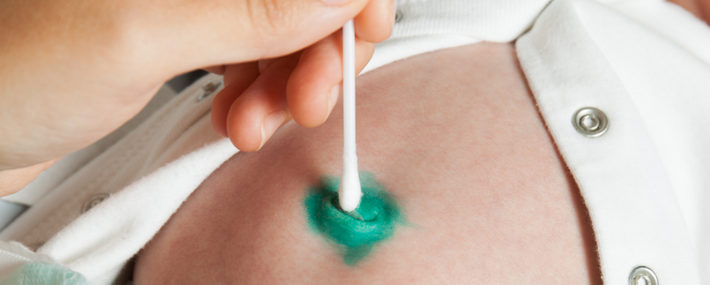
Before the procedure, wash your hands well with soap. Be sure to inspect and smell the wound. Normally, purulent discharge and an unpleasant odor should not be. Drop hydrogen peroxide into the wound, wait a bit until the crusts soften. Then gently remove them with a cotton swab from the surface. Take a clean, dry cotton swab and dab it in the wound to dry it. Now you can drip a solution of Chlorophyllipt and wait for it to dry. After that you can put on a diaper and clothes.
- Wash your hands with antibacterial soap (you can use household soap).
- Examine the navel for pus. Smell the wound - there should be no smell.
- Put a little hydrogen peroxide on the wound - do not fill it with the entire recess.
- Wait a bit - the peroxide should dry (you can gently remove the crusts with a cotton or cotton pad).
- Draw a little green (or a solution of Chlorophyllipt) with a pipette and drip onto the wound.
That's all. Processing completed. Wait until the zelenka dries, and put the crumbs on. Remember that the diaper should not cover the navel. Also, while healing the umbilical wound, it is better to abandon the panties, replacing them with a slip.
It is worth noting! The diaper should not touch the umbilical wound. To do this, you can purchase special models with a navel cutout or make a cutout on your own. And you can wear a diaper by tucking it a little in front. Also, while healing, it is undesirable to wear panties on the newborn, it is better to use bodyocks.
The use of several antiseptics at once is a bad idea, this can cause a negative reaction of the child's body. Usually it is enough to rinse the navel with hydrogen peroxide and treat it with brilliant green or a weak solution of manganese. Before using any other drug, it is necessary to consult a pediatrician observing a child.
Around the navel, yellowish crusts may form. Therefore, you first need to cleanse the skin from them with hydrogen peroxide. You can wipe the navel with a moistened cotton pad, but it is better to drip a little inward - the solution will foam and soften the crusts. It is enough to apply peroxide only in the morning since after an evening swim, the wound remains clean.
In no case can you pick these crusts, tear off “dry”, this can damage delicate skin and, again, provoke bleeding and infection. But you need to remove the crusts, because it is a microbial culture medium.
To prevent complications, you need to arrange the child more often air baths - In the air, the skin breathes, and the wound will dry faster.
When using diapers, you need to be careful so as not to injure the navel. Special models with a cutout on the belt help in this. Diaper replacement, of course, must also be on time, so that urine does not enter the wound and does not irritate the skin.
While the umbilical wound has not yet healed, bathe the baby only in an individual bath in boiled water. Some doctors recommend adding to the water. decoction of a string or chamomile (BUT HERBS ADD ONLY AFTER CONSULTATION WITH A DOCTOR !!!). Make sure that after bathing in the umbilical bottom there is no water left, for this, soak it before treating with a cotton pad or diaper.
In some cases, the umbilical cord does not fall off after a few days. Then its ends are cut off and a bandage is put in place. In the first days after the procedure, the oocyte can ooze. At this time, you do not need to bathe the baby, it will be enough to wipe it with a warm, moist diaper.
If the navel of a newborn gets wet, you must definitely pay attention to this and consult your pediatrician. In most cases, this is not a big deal, however, it happens that this is a symptom of a disease. After a while, the wound will be delayed, and in its place there will remain a charming navel, which will always remind of the unity of mother and child.
Take care of your kids!
READ ALSO:
Umbilical wound treatment:





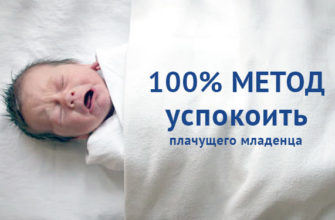


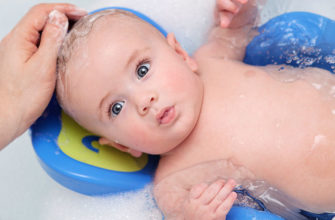
God, how much nerve I spent with this navel. My mother advised me to smear with green stuff, to dry as they say ... Tfu tfu tfu, thank God that was all. If you are concerned about strong discharge, color or smell, do not hesitate to call and call a pediatrician at home to calm down!